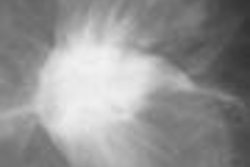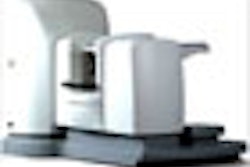CHICAGO - Is the breast imaging community embracing full-field digital mammography (FFDM) despite higher equipment costs and low reimbursement rates? Yes, according to a study presented Tuesday at the RSNA 2007 meeting, but FFDM exams represent a small portion of total mammography volume in the U.S.
Dr. Vijay Rao and colleagues at the Center for Research on Utilization of Imaging Services (CRUISE) at Thomas Jefferson University in Philadelphia reviewed the national Medicare database for the years 2002 -- the first full year that FFDM codes were available -- to 2005.
All CPT codes for film-screen mammography (FSM) and level II Healthcare Common Procedure Coding System (HCPCS) G codes from FFDM were analyzed. Global and professional component claims were included, although technical component claims were not, as that would have resulted in double counting, Rao explained.
The authors looked for several trends:
- FFDM and FSM volumes for screening
- FFDM and FSM volumes for diagnostic studies
- Utilization rate per 1,000 female Medicare beneficiaries for combined FSM and FFDM
According to the results, the utilization rate per 1,000 for all screening mammography (both FSM nd digital) increased by 6% from 282.5 per 1,000 in 2002 to 300.6 per 1,000 in 2005. The rate for all diagnostic mammography dropped by 5% from 98.1 in 2002 to 93 in 2005.
In terms of procedure volume, there was a 3% reduction in the number of FSM studies performed from 2002 to 2005 versus a very dramatic 405% rise in FFDM use in that same time period.
In 2005, 69% of all FSM studies and 75% of all FFDM exams were for screening. The researchers said they found a drop in mammography use for diagnostic studies between 2002 and 2005, which could be attributed to the use of other modalities such as ultrasound and MRI, as well as changes in coding practices, Rao said.
Rao noted that while FFDM use had clearly ballooned in that time period, FFDM only made up 10% of all mammography volume in 2005. "In view of the high cost of FFDM, it will be interesting to see how widespread its use becomes in future years," she said.
Commenting on the study, RSNA session moderator R. Edward Hendricks, Ph.D., pointed out that, according to the latest U.S. Food and Drug Administration data, about 27% of the mammography units installed in the U.S. are FFDM. Utilization may be on the rise because the FFDM unit may be the preferred imaging modality even at a center that only has one in place, he said.
By Shalmali Pal
AuntMinnie.com staff writer
November 27, 2007
Related Reading
Walking the tightrope: The legal and regulatory impact of digital mammography, October 11, 2007
Positioning is the key to making the most of FFDM, October 10, 2007
Top 10 considerations for FFDM and PACS integration, October 4, 2007
Digital technology makes headway for breast cancer screening, August 29, 2007
Managing the transition to digital mammography, March 1, 2007
Copyright © 2007 AuntMinnie.com



















